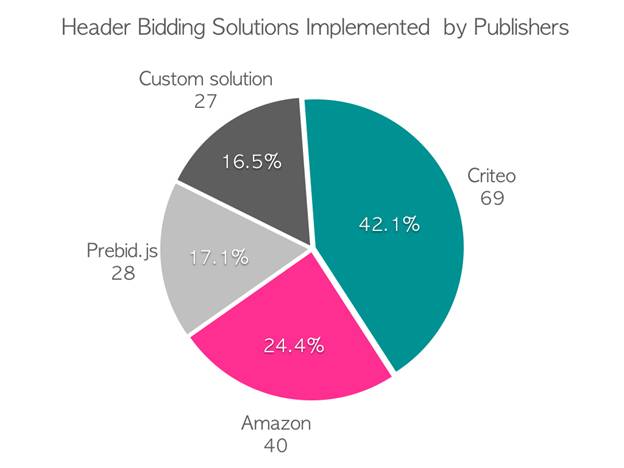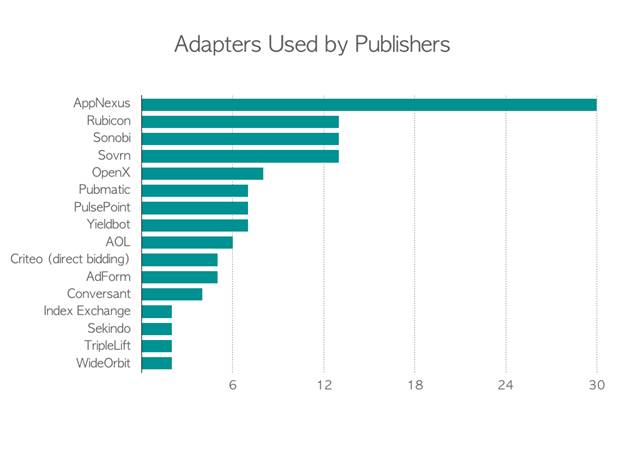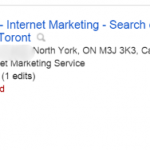Surprise: Only 12% of top websites are using header bidding
Ad tech firm GetIntent also finds out that the leading solutions are not open source.
In the world of digital advertising, header bidding hit superstar status in the last year or so.
But a new report from New York City-based ad tech firm GetIntent — out today — indicates that header bidding is not as popular among one group of leading publishers as you might think. And it shows that the open source Prebid.js is not the leading solution among those sites.
Header bidding places some code in a website’s page header to offer site inventory to advertising bidders at the same time. The winning bid then competes with the site’s own direct-sold ads, with the aim of getting the highest price for the space. In some cases, publishers are conducting the auction using server-to-server connections instead of the more popular client-side (browser) implementation.
It was developed as an alternative to the common waterfall auction conducted by Google’s DoubleClick, where the inventory goes from one bid to another until an acceptable price is found. But, in DoubleClick’s popular implementation, its Ad Exchange Service (AdX) gets a preferential position in the auction, which keeps publishers from getting the highest price.
If you listen to the buzz, you would think that almost every major publisher is climbing aboard the header bidding wagon. Ad firm AppNexus said last year that its research indicates 70 percent of the Comscore Top 200 publishers are using header bidding wrappers.
But, to check that and similar estimates, GetIntent wrote some software to scrape header bidding info from websites. They chose the top 1,000 websites as listed in the Amazon-owned site traffic tracker Alexa (alexa.com).
Surprisingly, they found that only about 12 percent of the Alexa top 1,000 websites — 121 sites — are using header bidding.
GetIntent also looked at the wrappers (containers) employed. In a blog post announcing the research results, the company offered a definition:
“[W]rappers, or containers, help publishers manage multiple header bidding solutions. A wrapper gathers bids from demand sources and implants them directly into a publisher’s ad server to compete with the bids from direct sales partners.”
The Prebid.js wrapper is open source and was developed by leading ad tech firm AppNexus, which claims to have developed header bidding. But, it turns out, Prebid.js is not the dominant solution among the Alexa 1,000.
Criteo, Amazon
Instead, the most popular solution is provided by retargeting firm Criteo, supplying 42.1 percent of the header bidding-using sites in the Alexa 1,000. Second most popular: Amazon’s, at 24.4 percent. Only 17.1 percent employed the Prebid.js container, and GetIntent found that some publishers are using several wrappers. About 16.5 percent could not be identified, so GetIntent assumed they were custom solutions. Here’s GetIntent’s visualization:
GetIntent’s Lead Software Engineer Maxim Kraynov said in the post that the Amazon tech is detected as a container, but “the company itself doesn’t label its header bidding product a wrapper, because it’s a cloud-based solution.” He also noted that the Criteo tech is also “not a container as such.”
George Levin, CEO and co-founder of GetIntent, pointed out to me that Criteo is not usually considered among the most active proponents of header bidding. In December of last year, Amazon updated its header bidding offering with a cloud-based service.
But, he noted, it makes sense that retargeting service Criteo is a leader, adding that it may actually have been using some form of header bidding before anyone else — as early as five years ago — out of necessity.
“Let’s say you go to Apple’s site and want to buy a laptop,” he suggested — but you quit your shopping cart before you complete the purchase.
Levin said that Criteo, as a retargeter with predictive analytics, knows that you’re very likely to complete that purchase because you went as far as the shopping cart. It’s willing to “pay a lot for the inventory on the next website” you visit, so it can show you an ad for that laptop.
But Criteo might well not get that opportunity if Google’s AdX bids for the space on that next site before it does, he said, which is why Criteo began using header bidding. Amazon, he said, similarly wants to retarget you with an ad for the product you just saw on its site.
The GetIntent research also looked at the bidder adapter used. It’s software placed by the advertising bidder inside the wrapper, where GetIntent says it translates the “bids into a common key value for the ad server.”
Of the 121 sites using header bidding, there were 126 uses of adapters. Of those 126, 24 percent of adapters were from AppNexus, with about 10 percent each from ad tech firms Rubicon, Sonobi and Sovrn. From GetIntent:
Marketing Land – Internet Marketing News, Strategies & Tips
(41)
















